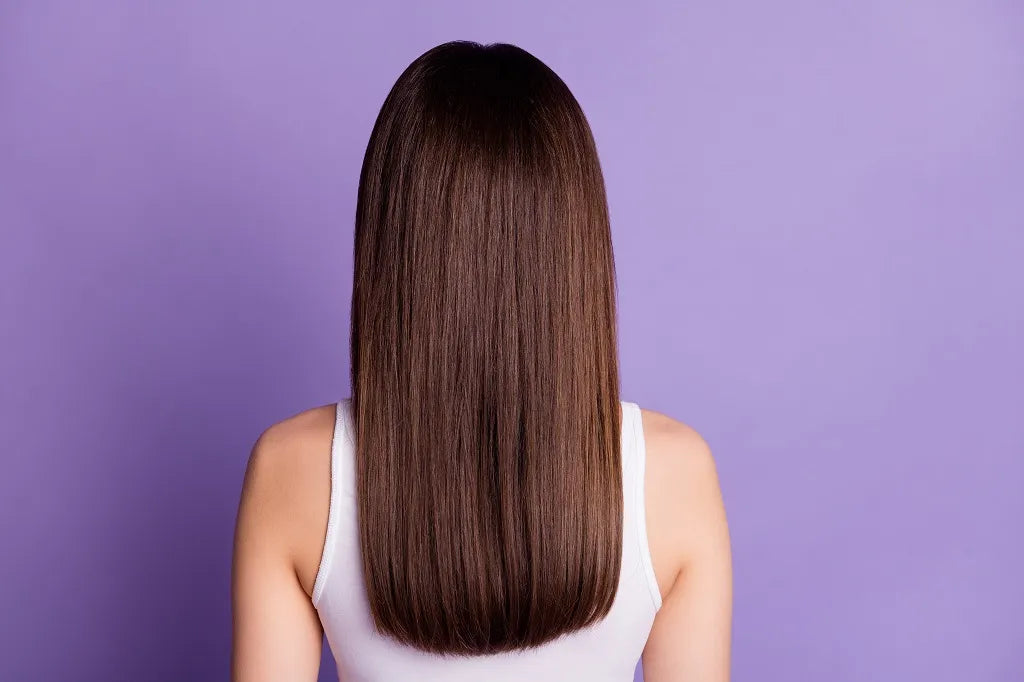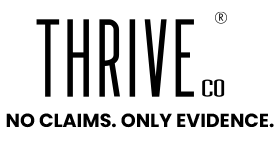
Hair Growth And Hair Fall - Stages, Causes & More

Dr. Deepthi Prasad, MBBS.
Written by Our Editorial Team
The hair growth cycle is more complicated than we think it is. Hair growth occurs in a cycle of four distinct stages over the course of several years. Understanding the concept of hair growth and hair loss will help us in taking care of our tresses in a much better manner. Those who are prone to hair thinning, hair loss, or have family members suffering from pattern baldness should understand the hair growth cycle to keep hair fall at bay.
The stages of hair growth
Like everything else in the body, the hair also goes through a complex, multi-stage growth process. Usually, a person experiences three inches of hair growth in a span of 6 months and approximately 6 inches hair growth over 1 year.
The hair structure can be divided into two parts, the hair follicles, and the hair shaft. The hair follicles lie under the surface of the scalp and are the primary zone of new hair growth. Follicles are living structures where cell division takes place. The hair shaft is the part of the hair that grows outside the hair scalp and is attached to the scalp with a hair bulb.
There are three established phases of hair growth:
- During the anagen or growth phase, the hair grows out from the bulb to its complete length. During this phase, the hair shaft grows longer because of the rapid cell division taking place at the follicles. During the anagen phase, the hair grows for about 1 inch every month; this phase lasts for about 5 to 6 years. So, on average, a hair strand can grow up to 30 inches long, if it is not cut down.
- The catagen phase happens to be a transitional phase that marks the end of the hair shaft’s growth. The blood supply is cut of at the follicular level and the hair stops growing. This phase lasts around 10 days.
- The telogen or third phase of hair growth lasts for about 90 to 100 days. This is the resting period when the strands remain attached to the follicles but stop growing. An estimate of 10 to 15% of hair strands experience the telogen at any given point in time, which is why losing 50-100 strands of hair daily is considered normal.
- Some experts believe that there is a 4th stage in the hair growth cycle known as the exogen phase, where the hair strands fall from the roots and the whole new process begins. The Exogen phase lasts for about 2 to 5 months.
It is important to note that every individual strand is different and grows independently at different rates, or else all hair would fall out and grow out at the same time. The problem of hair loss occurs when there is a disruption in the hair growth cycle. Metabolic imbalances, illness, improper nutrition, stress, and chemicals are some common factors that disrupt the hair growth cycle.
What is hair loss?
While normal hair fall is common, hair loss is an indication that the hair growth cycle is disrupted. While hair fall marks the loss of a few hair strands every day, hair loss leads to reduction of hair volume and density. There are many causes behind hair loss; some of them are reversible and some irreversible.
Types of hair loss
- Involutional alopecia: This is a natural condition where the hair thins (hair thinning) because of age. The hair follicles become inactive or dormant and the remainder of the hair grows shorter. It leads to a loss in hair density and volume.
- Androgenic Alopecia: This is a genetic condition and can affect men and women. Also known as male and female pattern baldness, this condition can cause hair loss in people in their early 20s and 30s. It leads to a gradual disappearance of hair from the frontal scalp which is also known as a receding hair line.
- Alopecia areata: This can happen to anyone, young adults and even children. It causes hair balding in patches and if not treated early can cause complete baldness. Fortunately alopecia areata is reversible, and with correct treatment, almost 90% of people go back to their natural hair density.
- Telogen effluvium: This condition can be reversed, with hair restorative treatments. Telogen effluvium is temporary hair thinning which is caused because of the changes in the growth cycle of hair. In such a scenario, the majority of the hair enters the resting phase at the same time, which leads to hair loss and thinning.
- Scarring alopecia: Health conditions such as the formation of lupus and lichen planus, or even acne, cellulitis, and folliculitis lead to this type of hair loss. Hot combs and tight ponytails as well as braids also lead to this problem. This is a permanent form of hair loss and cannot be reversed.
Causes of hair loss
There are a variety of factors that induce hair loss and some of them are mentioned as follows:
- Hormones: believe it or not, the level of androgen in our body is one of the prime factors that determines hair growth and loss. Abnormality in androgen levels can lead to hair loss.
- Genetics: Genetics from the maternal and paternal side of your lineage can predispose you to genetic hair loss, which unfortunately is irreversible.
- Childbirth: Postpartum hair fall is common in women who have recently given birth. This form of hair fall can be reversed.
- Stress: Stress is one of the major causes of hair loss and alopecia. Stress leads to an increase in DHT levels, which leads to hair loss. The good news is, that stress-induced hair loss can be reversed.
- Long-term illness and medication: Thyroid, lupus, lung diseases, eating disorders, iron deficiencies, and anemia are some common factors that affect hair growth adversely. Medication and drugs including chemotherapy, birth control pills, blood thinners, and other types of cancer treatments can often lead to hair loss.
- Autoimmune diseases: Alopecia Areata is an autoimmune disease. It revs up in the system for unknown reasons and affects hair growth at the follicular level.
- Diet: Sometimes a bad diet is reason enough for hair loss. A low protein diet can often lead to loss of hair. It also affects the nails and skin. Intake of protein-rich food or supplements can combat this form of hair loss. Make sure you have a well-balanced diet to ensure your hair care efforts don’t go to waste.
Also Read : Skinification Of Hair : Not Just Another Beauty Fad!
How to cope with hair loss?
Hair loss and hair thinning can affect one’s confidence. The sudden onset of massive hair loss can cause initial shock and stress in people. However, the right way to cope with it is to use the correct hair loss treatment for it. Getting a few blood tests done can rule out a lot of factors, that are responsible for hair loss. Stress can lead to further hair fall because cortisol or stress hormone signals the hair follicles to go into a resting phase, thus accelerating hair loss.
Most forms of hair loss are reversible. Hair growth treatmets, combined with a good diet and lifestyle will help. Most doctors prescribe ingredients like Redensyl, Procapil, AnaGain, and Capilia Longa, to combat hair loss, as they happen to be tried, tested, and proven treatments for hair loss. There is no one-size-fits-all notion when it comes to hair loss treatments, but the aforementioned ingredients have helped thousands of people in regaining their hair and confidence.
Hair growth-inducing ingredients
From ayurvedic options to science-backed ones, there are many hair growth-inducing ingredients available in the market. However, some of the most-talked, dermatologically backed ingredients are mentioned as follows:
- Redensyl: An excellent hair growth ingredient of a natural origin it awakens the dormant and shrunken hair follicles to generate a new hair growth phase, in areas of hair thinning and balding. It is a plant-derived ingredient with no side effects, plus it does not lead to hair fall, once its use is discontinued.
Also Read : Redensyl- How Does It Help Hair Growth?
- AnaGain: derived from organic pea sprouts, AnaGain stimulates signal molecules in the follicles to reactivate hair growth. It helps in shortening the telogen phase and to accelerate the anagen phase. It prevents alopecia and stimulates hair growth.
- Procapil: Made from ingredients found in olive and citrus trees, Procapil strengthens the hair follicles to prevent hair loss caused by friction. It also boosts hair growth by 121%. It provides sufficient nourishment to the hair follicles and reactivates the hair growth cycle.
- Capilia Longa: It is a hair growth active that uses a biological approach to regrow lost hair. It switches on an epigenetic switch to restart hair growth activity within the hair follicles. It encourages microstimulation in the hair bulb to re-densify the hair. Capilia Longa is also used in beard growth treatments as it uses miRNA technology to act as a Hair 3D Bio-Printer to guide the hair follicles towards hair growth.
Also Read : Hair Growth Serums: The Best Alternative To Hair Transplant For Hair Growth
ThriveCo’s Hair Serum 2.0
ThriveCo’s Hair Serum 2.0 is an excellent treatment to fight hair loss. It combines the goodness of Redensyl, Procapil, Capilia Longa, and AnaGain to reactivate hair growth in areas of balding and thinning. It also contains hydrating ingredients like Hyaluronic Acid and Pentavitin to repair the scalp’s moisture barrier. It prolongs the life cycle of the hair for denser, thicker, and fuller hair growth.
About Doctor :

Dr. Deepthi Prasad specializes in Dermatology, Cosmetology, and Aesthetic Dermatology and has been practicing for over 15 years. After completing MBBS from Dr. NTR University of Health Sciences Andhra Pradesh in 2009, she earned a MD in Dermatology, Venereology & Leprosy from Osmania Medical College in Hyderabad in 2014.
Disclaimer:All the content published on www.thriveco.in is solely for information purposes. It is not a substitute for professional medical advice, diagnosis, or treatment. Always consider seeking the advice of your physician or a qualified healthcare provider. The information, suggestion, or remedies mentioned on this site are provided without warranty of any kind, whether express or implied.
 EXTRA 15% OFF. Coupon PAYDAY
EXTRA 15% OFF. Coupon PAYDAY 






